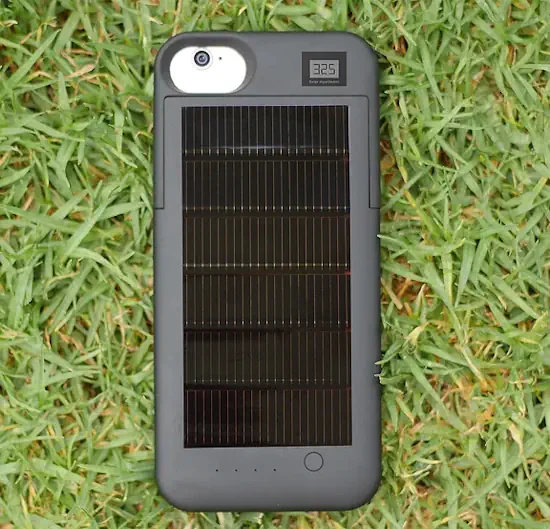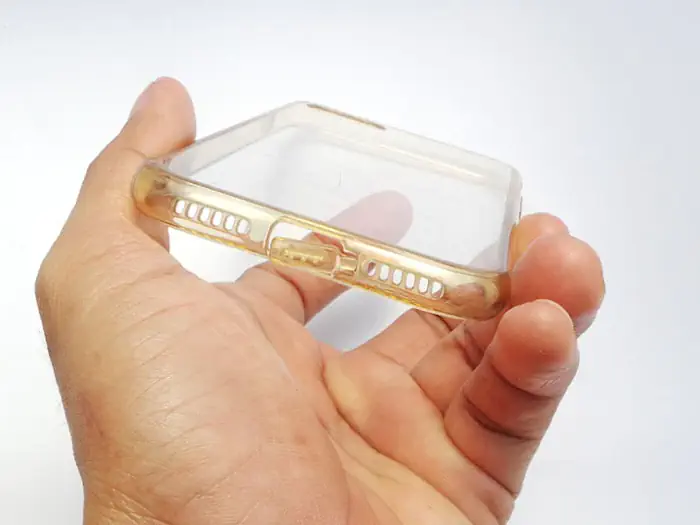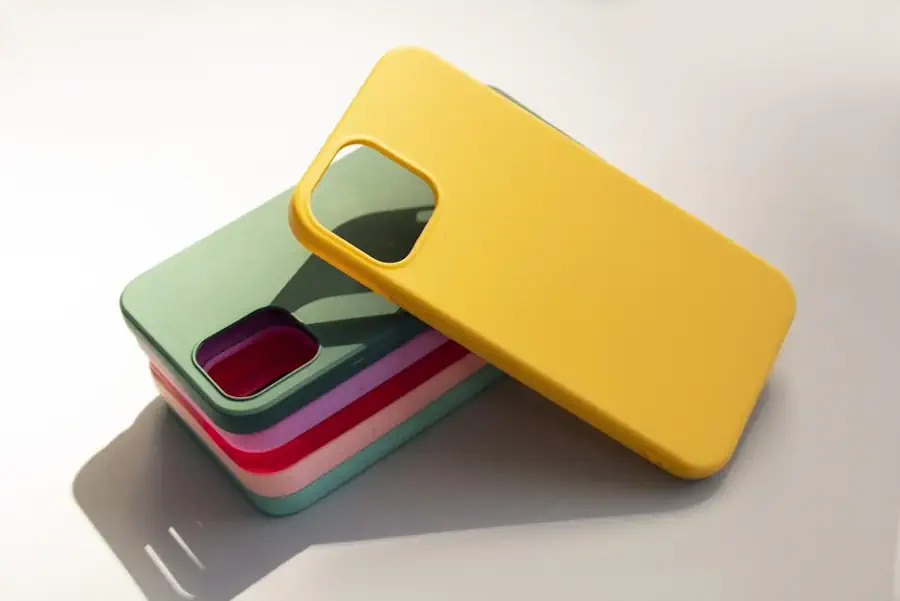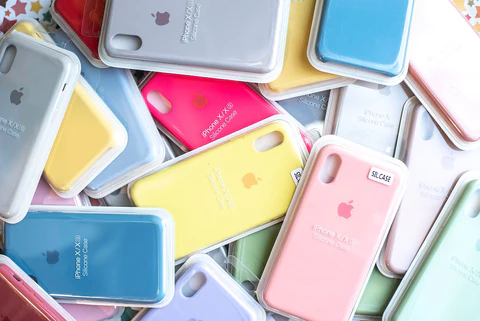Ever wondered how solar phone cases work?
Personally, I was kinda baffled, if I’m being honest. However, after owning a solar phone case for a while, tinkering with it, and researching the topic deeply, my curiosity was satisfied.
In this casually enlightening exploration, we’ll break down the science behind solar phone cases, revealing the secrets of harnessing solar energy to keep your phone juiced up.
Get ready to embrace the sunny side of phone charging!

How do solar phone cases work?
The solar panel on a solar phone case is typically made of thin-film solar cells, which are very efficient at converting sunlight into electricity. The solar panel is usually attached to the back of the phone case, and it is protected by a durable layer of plastic.
When the solar panel is exposed to sunlight, it generates a small amount of electricity. This electricity is then stored in a battery that is built into the phone case. The battery can then be used to charge your phone’s battery.
Solar phone cases typically have a small battery, so they can only store a limited amount of energy. This means that you will need to expose the solar panel to sunlight for several hours in order to fully charge your phone.
However, solar phone cases can be a great way to top off your phone’s battery when you are on the go. They are also a good option for people who live in areas where there is no electricity or who want to reduce their environmental impact.
Pros of using a solar phone case
- Environmentally friendly: Solar phone cases use renewable energy to charge your phone, so you don’t have to worry about using fossil fuels.
- Convenient: Solar phone cases can be used to charge your phone on the go, even if there is no electricity available.
- Durable: Solar phone cases are typically made from durable materials that can withstand everyday wear and tear.
- Save money on charging costs: Over time, the money you save on charging costs can offset the initial cost of the solar phone case.
- Peace of mind: Knowing that you have a way to charge your phone even if you’re without power can be a relief.
Cons of using a solar phone case
- Can be expensive: Solar phone cases are typically more expensive than traditional phone cases.
- Can be bulky: Solar phone cases may be thicker and heavier than traditional phone cases.
- May not be as effective in cloudy weather or low-light conditions: Solar phone cases need sunlight to charge, so they may not be as effective in cloudy weather or low-light conditions.
- Not a primary charger: Solar phone cases are best suited as supplementary chargers rather than primary charging solutions, especially for users who rely heavily on their devices.
- Fragility: The solar panels on these cases are exposed to potential damage from impacts, scratches, or moisture, which can reduce their effectiveness over time.
How to use a solar phone case

Here’s a step-by-step guide on how to use a solar phone case:
- Charge the Solar Case:
- Before using the solar case for the first time, it’s essential to charge it fully using a traditional charger or USB cable. This initial charge ensures that the case’s battery is ready for use.
- Attach the Phone:
- If the solar case is designed as a snap-on or slide-on case, attach it to your smartphone. Make sure it fits snugly and securely to provide protection for your device.
- Activate Solar Charging:
- Most solar phone cases have an on/off switch or button to activate solar charging. Locate and switch on this feature to enable the solar panels to capture sunlight.
- Exposure to Sunlight:
- Place your phone with the solar case in direct sunlight or a well-lit area. The solar panels need exposure to light to generate electricity. The more sunlight they receive, the faster they’ll charge the case’s battery.
- Monitor Charging Status:
- Check the case for LED indicators or a charging status display if your case has one. These indicators typically show the progress of solar charging. They may light up or change colors to indicate the charging level.
- Be Patient:
- Understand that solar charging is generally slower than traditional charging methods. It may take some time to accumulate enough solar energy to significantly charge your phone or the case’s battery.
- Use as Backup Power:
- Solar phone cases are best used as backup power sources. When your phone’s battery is running low, connect it to the solar case using a charging cable. Ensure that the solar case is charged sufficiently to provide power to your phone.
- Regularly Monitor Battery Levels:
- Keep an eye on the battery levels of both your phone and the solar case. This prevents your phone from running out of power and ensures that the solar case remains charged and ready for use.
- Maintain Clean Solar Panels:
- Periodically clean the solar panels on the case to remove dirt, dust, and smudges. Dirty panels can reduce the efficiency of solar charging.
- Store in Sunlight When Not in Use:
- If you’re not actively using your phone, consider placing it in direct sunlight with the solar case attached. This can help maintain the case’s battery levels and keep your phone charged.
- Turn Off Solar Charging When Not Needed:
- If you’re indoors or in low-light conditions and don’t need solar charging, switch off the solar charging feature to conserve the case’s battery.
Tips for getting the most out of your solar phone case

- Place the phone case in direct sunlight whenever possible. The more sunlight the solar panel receives, the faster it will charge your phone.
- Clean the solar panel regularly to remove any dirt or debris. This will help to ensure that the solar panel is working at its maximum efficiency.
- Avoid using your phone while it is charging. This will drain the battery faster and make it take longer to charge.
- If you are not going to be using your phone for a while, turn it off or put it into airplane mode. This will help to conserve battery life.
- Use a power bank to store extra solar energy. This way, you can charge your phone even when there is no sunlight available.
- Choose a solar phone case with a durable construction. This will protect your phone from damage and help the solar panel last longer.
- Consider the climate you live in. If you live in a sunny climate, you can choose a solar phone case with a smaller solar panel. If you live in a cloudy climate, you may want to choose a solar phone case with a larger solar panel.
- Think about how you will be using your solar phone case. If you plan on using it for camping or hiking, you may want to choose a solar phone case that is waterproof and shockproof.
Personal experience
I have been using a solar phone case for about a month now, and I am very impressed with it. I live in a sunny climate, so I am able to get a good amount of charge from the sun each day. I have found that I can easily go a full day without having to plug my phone in, even if I am using it heavily.
The case is also very durable. I have dropped my phone a few times since I started using the case, and it has protected it well. The case is also water resistant, so I don’t have to worry about my phone getting wet if I am caught in the rain.
Overall, I am very happy with my solar phone case. It is a great way to extend the battery life of my phone, and it is also very durable and protective.







